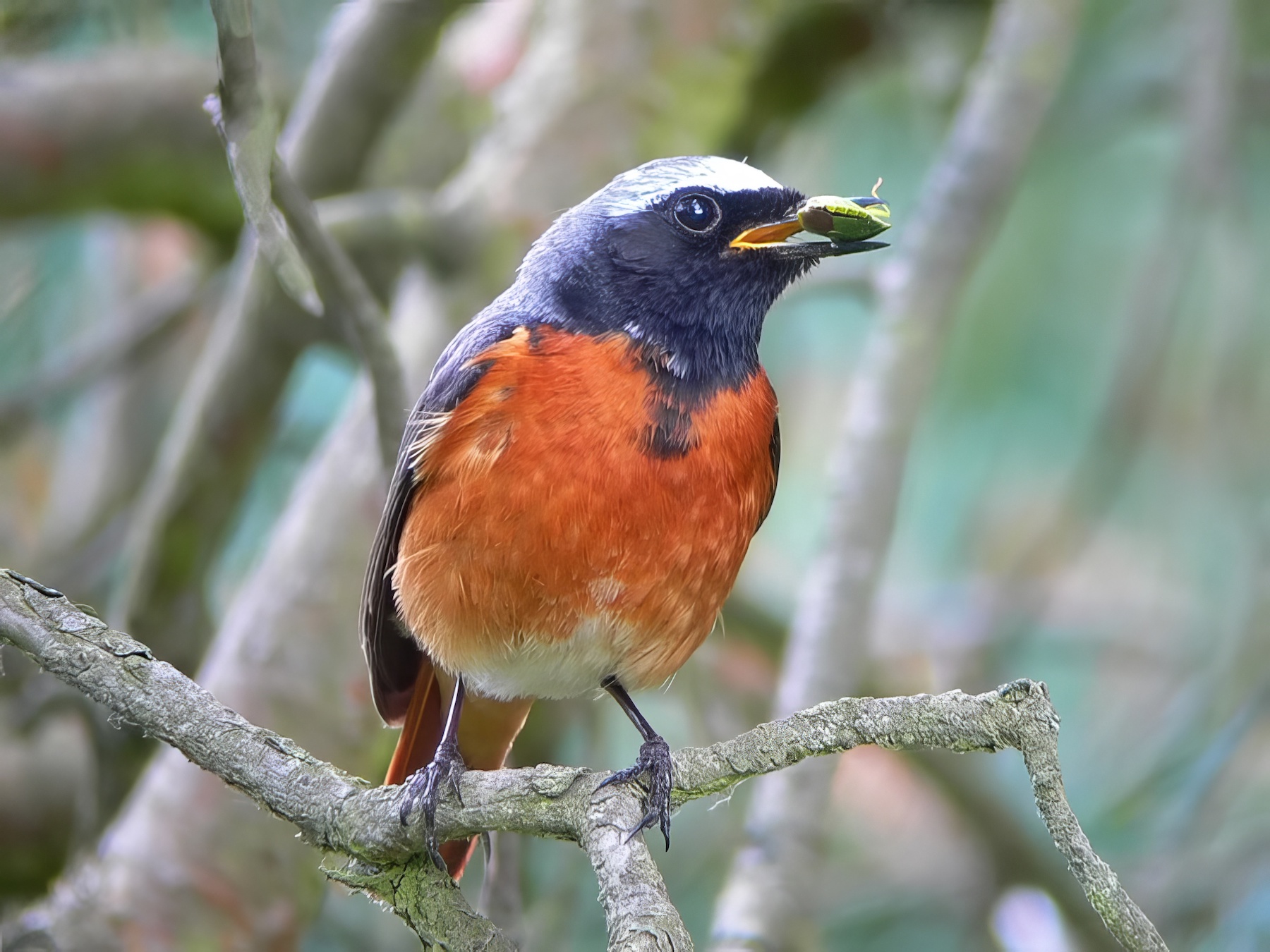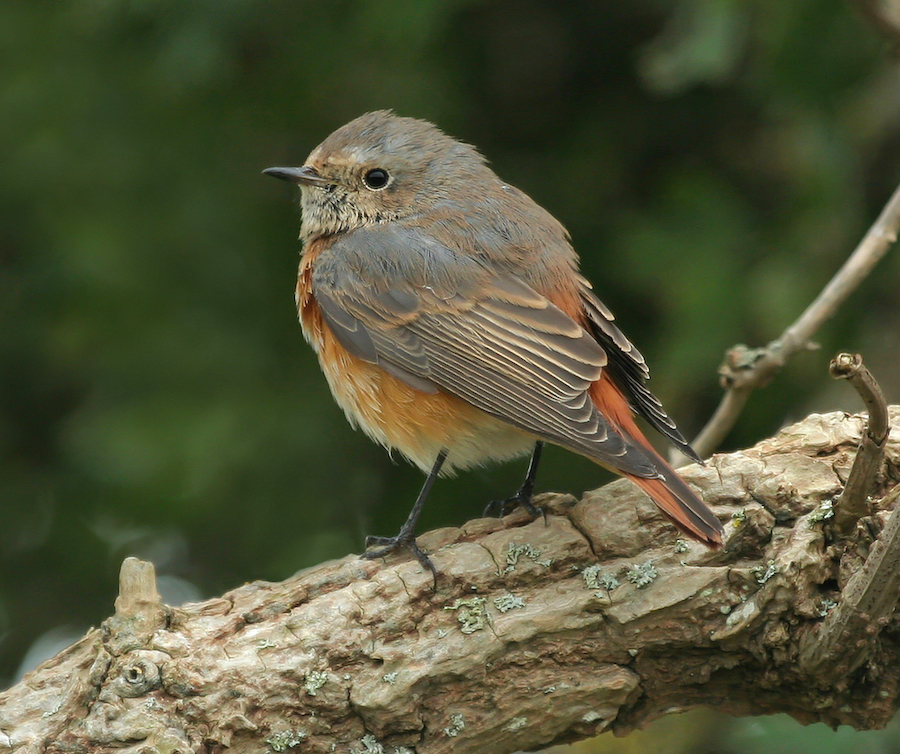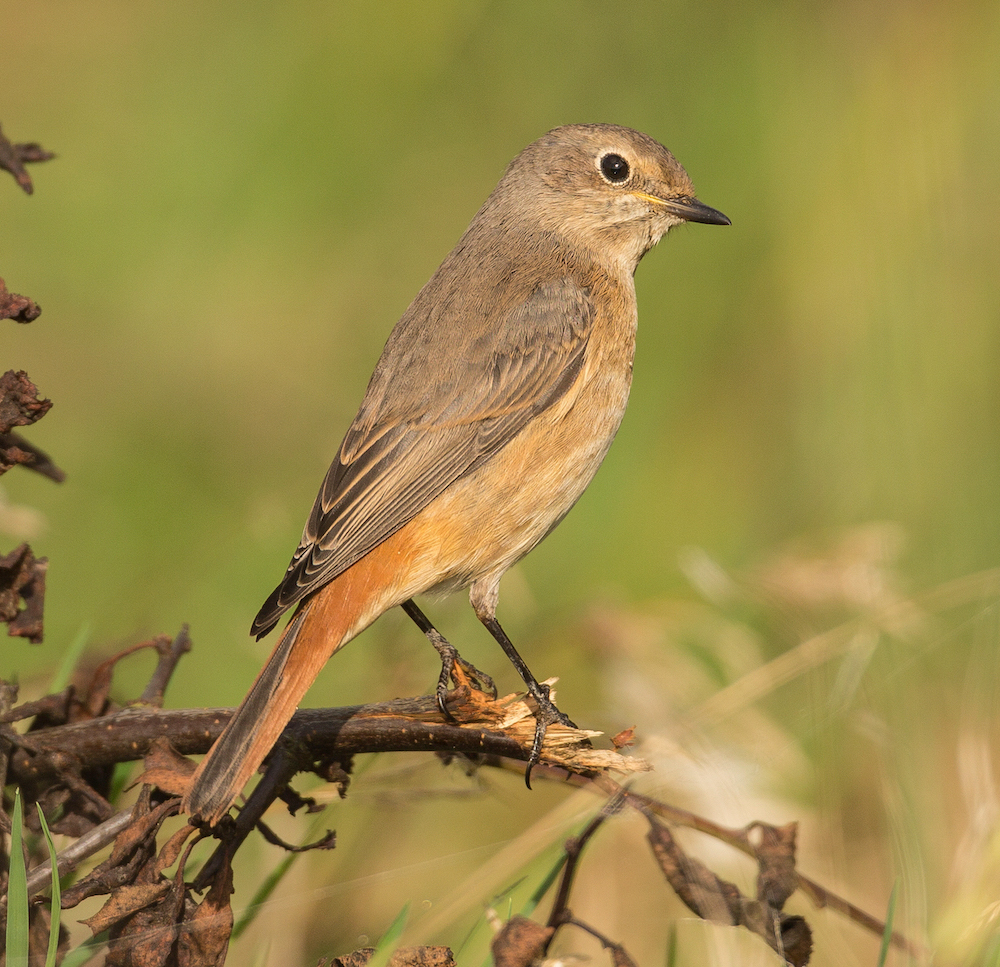Common Redstart Phoenicurus phoenicurus
Very scarce summer visitor and scarce passage migrant in spring, fairly common in autumn.



Redstart is sadly one of most recently lost breeding birds with the last confirmed breeding taking place at Bulby Wood near Bourne in 2013. The Atlas reported that there had probably never been more than 10 pairs a year breeding in the county in the 1980s with confirmed breeding in only five 10km squares compared to 16 in the BTO Atlas 1968-72. By the time of the BTO Atlas 2007-11 it bred in just one 10km square at Linwood Warren, where the last brood of nestlings there were ringed on July 19th, 2007. An adult female was ringed in a nest box at the same location on May 21st 2008 but the nest was subsequently deserted.
Overall, Redstart is thought to be holding its own as a breeding bird across England with no obvious explanation for the decline in the East Midlands and Eastern England. It has also got much scarcer in Lincolnshire as an autumn migrant. The Atlas reported that “on the coast...parties of up to 30 birds were often recorded in the 1980s. Larger numbers, totalling several hundred, were formerly more frequent but are now irregular”. LBR 1996 reported a maximum combined peak total (monthly peaks across all sites) across the coast of 708 on September 18th. LBR for the five years to 2018 shows that spring passage was very light with peak counts ranging from one in 2015 to four at Gibraltar Point May 7th-10th 2017 with an average peak of five. Spring males sang at two former breeding haunts in 2017. Autumn passage ranged from a peak site count of three in 2017 to 23 at Donna Nook on September 18th, 2014. The second largest count was 16 at Gibraltar Point on August 23rd, 2016. The average peak autumn passage 2014-2018 count was 10. BTO ringing data indicate that Redstarts trapped and ringed in Lincolnshire are from the Scandinavian breeding population and that autumn birds are most likely to be recovered in France and Spain with one 1CY female ringed at Gibraltar Point in October being recovered in Algeria the following May.
(Updated with reference to the new Birds of Lincolnshire (2021) December 2022)
